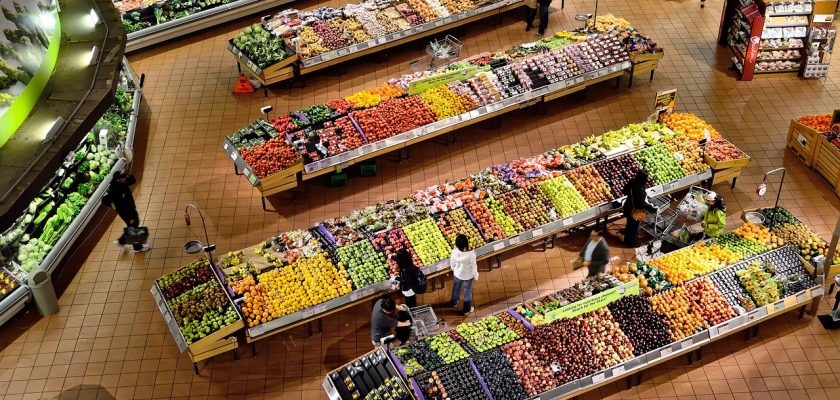The holiday shopping season has lasted for nearly two weeks, and for many people, it has impacted the way they celebrate Thanksgiving. With higher food prices and higher prices for clothes and other items that are usually given as gifts, the holiday may become more meaningful for many people. It also means that a lot of people will have to find ways to celebrate the holiday in a different way.
Food prices are forecast to be up between 4.5% and 5.5% over last year
Despite the avian flu outbreak that cut down on turkey flocks, prices for the holiday staple have gone up. According to the American Farm Bureau Federation’s annual survey, a traditional Thanksgiving dinner will cost about 20% more than last year.
The avian flu has caused a temporary regional shortage in some states, but the supply is expected to be sufficient this year. Another contributing factor is the higher cost of feed.
Increasing prices have been driven by a number of factors, such as the recent invasion of Ukraine and the extreme weather conditions in some parts of the country. As a result, consumers have been forced to lower their consumption in some food and beverage segments.

Image by Alexa from Pixabay
Turkeys are the most expensive part of a traditional Thanksgiving meal. Prices have increased almost 17% annually over the past four years. A number of other foods, including poultry, seafood, and meats, have also experienced an increase in price. Fortunately, the supply of whole turkeys should be adequate this year.
Some retailers are promising lower prices for Thanksgiving staples this year. Aldi has announced that it will offer turkey for under $1 a pound, and Lidl will sell a $30 Thanksgiving basket of 12 items. Walmart has also said it will continue selling holiday basics at current prices.
Although food prices have risen, they have stabilized in recent months. In October, prices were up 12.4% compared to last year. However, that doesn’t mean that shoppers aren’t worried about the rise in inflation. During the summer, food prices hit a 13.5% annual rate.
A majority of consumers are expecting to pay more for their Thanksgiving dinner this year, with almost one-third planning to reduce their spending. This is a reflection of how consumer sentiment has been near its lowest point in the last few years.
Food-at-home price inflation continued in February, with the federal government’s index rising 1.2%. Retailers must balance the cost of their products with rising labor costs. To do so, they have rolled out loyalty programs and special discounts. Those who participate in such programs will get discounts on hundreds of grocery items.
Inflation may force people to celebrate the holidays a little differently
Inflation may have you thinking twice about your holiday plans. The cost of everything from Christmas trees to Thanksgiving dinners is on the rise. As a result, holiday shoppers will need to spend more on gifts, food and entertainment than they’ve been used to. Fortunately, retailers are doing their best to accommodate consumers’ increased spending powers. However, that does not mean that they won’t be raising prices.
It’s no secret that inflation has left the holiday season feeling decidedly less festive than it was a year ago. Gasoline, airfares and clothing are all on the uptick. What’s more, household energy costs have spiked a whopping 17.1 percent in the last year alone.
A recent survey by the National Retail Federation revealed that the US is feeling the pinch of the holidays. According to the survey, a whopping 43 percent of shoppers say they have trimmed their holiday budgets, while an equal number plan to use savings, credit cards and other “buy now, pay later” services. Despite the uptick, a survey by PwC revealed that high income households are set to spend a whopping 15% more on holiday goods and expenses than they did in 2010. This increase could be attributed to a number of factors, but the oh so important factor is the aforementioned inflation.
While there’s no way to quantify which is the most expensive and what is the cheapest, the best guess is that shoppers will need to spend a few extra cents per gallon for gas, airfare and clothing this season. To put a dent in those figures, some retailers are offering promotions earlier in the season. For example, Walmart is launching a “Walmart Saves” promotion for customers with eligible purchases. Similarly, Target and Macy’s are running a promotion to boost holiday sales.
Of course, there’s no way to accurately gauge whether or not this year’s inflation induced price hikes will cause consumers to hold off on making holiday plans until the new year. But, there’s no reason to think that the economy is not still chugging along.
Origins of the holiday
The history of the holiday shopping season and thanksgiving traditions are intertwined. It is a time of gratitude for what we have, a time to give back to our community and a time to give thanks to our Creator.

Photo by Libby Penner on Unsplash
Originally, Thanksgiving was a harvest festival, a time when people gave thanks to God for a successful harvest. In the 17th century, people were invited to the feast of the Pilgrims at Plymouth, Massachusetts, along with the Native Americans.
As Thanksgiving continued to grow in popularity, its origins were debated. Many believed it originated in the United Kingdom in the 16th century, while others thought that it was a native American tradition.
During the Civil War, President Abraham Lincoln proclaimed Thanksgiving Day as a national holiday. However, the practice of celebrating the day of the holiday did not become a national tradition until the mid-19th century.
After the Civil War, many people began to celebrate Thanksgiving on the last Thursday in November. This tradition was also used to celebrate the beginning of the Christmas shopping season.
In 1941, Congress passed a joint resolution declaring that the last Thursday of November would be a federal holiday. However, not all states agreed to the change. Some were angry at the use of Thanksgiving for political speeches.
The early Thanksgiving feasts were held for survival and to thank God for the harvest. Several ancient civilizations celebrated harvest thanksgiving.
A few years later, the first Thanksgiving in Canada was celebrated by an English explorer, Martin Frobisher. He thanked God for a safe passage through the New World.
As time passed, Thanksgiving became a yearly tradition in New England and other communities. Many towns and cities held costumed parades.
Some towns also began a “turkey trot” run. These runs were held in communities throughout the country.
Eventually, Thanksgiving merged with religious and civic elements. During the mid-20th century, prominent Orthodox rabbis gave the holiday hechsher.
In 1939, President Franklin D. Roosevelt changed the date of Thanksgiving. His change was a way to extend the holiday season. But it created a huge public uproar. And, as a result, the date was moved to the third Thursday of November.
